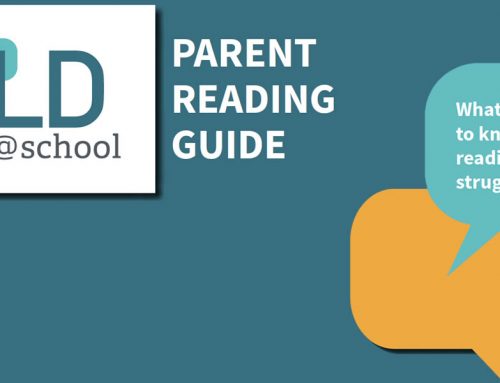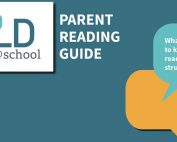Written by Martin Smit, Educational Consultant, LDAO
If your child has a learning disability (LD), you may be familiar with the term differentiated instruction (DI) or noticed it written in the Individual Education Plan (IEP). This is an important concept to understand while you help your child navigate schoolwork at home. Essentially, differentiated instruction is the understanding that all children learn in different ways. Some are visual learners, while others depend more on auditory learning or hands-on learning. Some students take extra time to process their thinking while others may benefit from repeated small-group instruction. In the classroom, teachers work to understand the learning profiles of their students and ensure that lessons and assignments are developed to meet everyone’s needs.
Content, Process, and Product: Where Differentiation Occurs
Some common examples of DI at school might include differentiating content. For example, a student who struggles with reading may be given a novel that is written at their reading level. This might create the ability to explore similar themes in novels other students are reading. This allows a student with LDs to fully participate in class discussions and assignments.
Another option is to differentiate the learning process. Students with LDs may use text-to-speech technology to read a book that is above their reading level. This approach allows the student to focus on comprehension instead of decoding words. In mathematics, students may use manipulatives or have their work broken into steps by the teacher.
Another important differentiation involves the product. The final product is how students demonstrate their learning or understanding through a final assignment or culminating task. Rather than assigning a single option for all students, such as an essay, students might be encouraged to show learning in a way that highlights their strengths such as a video, a dramatic performance, or other creative means.
To learn more about this teaching approach, click here to access the LD@school article, Differentiated Instruction.
Applying Differentiation at Home
It can be helpful to keep the concept of differentiation in mind when working with your child at home. The teacher should ensure content and the product are at the correct level. If your child seems to be struggling with content, or the final product, contact the teacher and let them know your concerns.
The process is where you can really help. Before getting started, ensure that your child has a clear understanding of the goal of the assignment. Break it down into manageable pieces and consider what parts might cause the most frustration and anxiety. This is where you can decide what areas should be differentiated for your child. The goal is for the student to focus their energy on what is most important to their learning and not waste energy on other tasks.
Below are some examples of typical assignments and how the process of completing them may be differentiated to allow the student to focus their energy on the main learning goal:
Sample Assignments
Novel study
Learning Goal: Show Understanding by Answering Comprehension Questions
Most of the student’s energy should be directed toward the learning goal of showing understanding. If a student’s energy is focused on trying to read or decode text, there is not enough left for the learning goal. Here are some ways to keep student energy focused on the goal by differentiating the process:
- Use text-to-speech assistive technology such as Google Read and Write
- Read to the student
- Use a graphic organizer to capture ideas during reading
Write a 3-Paragraph Essay
Learning Goal: Demonstrates Understanding of a Theme in a Novel
The student’s energy should be directed at organizing their thinking. If their energy is used writing or trying to decode text, they may feel as though they will never get the actual writing done. These are some possible ways to keep their energy focused on the goal, by differentiating the process:
- Use speech-to-text assistive technology (e.g. Google Read&Write) to reduce anxiety and time required to write or type
- Use a graphic organizer (mind map) to organize thinking
- Use text-to-speech assistive technology to reduce any anxiety that may have been created by reading
Click here to access the article, Strategies to Assist Students with Writing Difficulties
Complete a Multi-step Mathematics Problem
Learning Goal: Student Understands the Steps Used to Solve a Problem
Multi-step problems can be problematic for a student with an LD because they may have difficulty knowing where to begin. They may have trouble reading the instructions or struggle to get their thinking on paper. These areas can create anxiety and reduce the energy they need to focus on solving the problem. Here are some possible ways to keep their energy focused on the goal by differentiating the process:
- Use text-to-speech assistive technology to ensure the question is understood
- Use a graphic organizer to clarify the steps of the problem and tools required to solve it
- Use manipulatives to show thinking
- If the student struggles to get their thinking into writing, have them record themselves explaining their thinking on video. Try using apps like Explain Everything, Edu Creations, or Show Me to record them solving the problem.
- Use heuristics to help the student know where to start and remember all the steps needed to solve the problem
- Take short breaks after each step is completed
Click here to access the article, Using Manipulatives to Support Math Learning at Home
Click here to access the article, Shortcuts for Math Problem Solving
The key to getting work completed is to understand what is most important and help the student focus their time and energy on the most important part of the work. Working in short blocks and taking breaks for a snack or physical activity can ensure students return to their work refreshed and ready to focus. You can also help your child develop their self-advocacy skills. If they are finding the work too difficult, they should reach out to their teacher and explain the problem and even suggest some alternatives. Students will benefit from your help and support, but the goal is for students to recognize their learning strengths and advocate for themselves.










